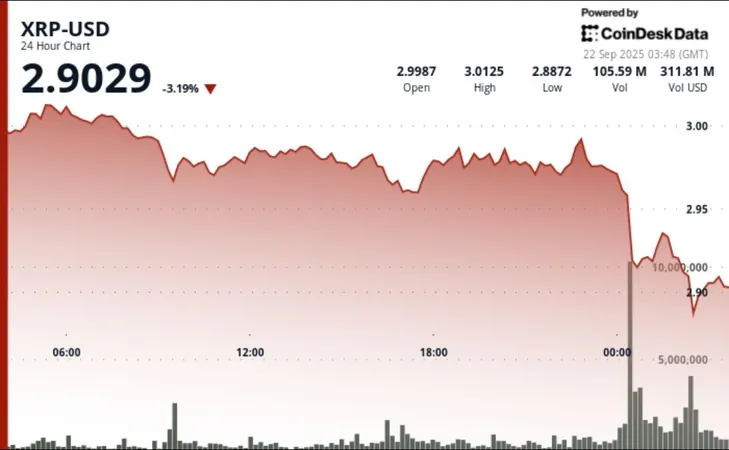
Asteroid Mystery Unveiled: Amateur Astronomers Track Fiery Descent in France
2025-09-21
Author: Arjun
In a thrilling collaboration between amateur and professional astronomers, a small asteroid has been tracked from its cosmic journey to an extraordinary fiery breakup over northwestern France. This remarkable event sheds light on how asteroids disintegrate upon entering Earth’s atmosphere.
Asteroid 2023 CX1 Lights Up the Sky
On February 13, 2023, at around 4 PM (1400 GMT), the sky erupted as Asteroid 2023 CX1, measuring less than a meter wide and weighing 650 kilograms (about 1,400 pounds), disintegrated spectacularly over France. This timing was crucial as just seven hours prior, a Hungarian astronomer had located the asteroid about 200,000 kilometers (125,000 miles) from our planet.
A Global Effort to Track the Descent
Backed by teams at NASA and the European Space Agency, scientists quickly determined the asteroid’s trajectory and timing like never before. Observatories worldwide mobilized, pooling their resources to analyze every moment of the asteroid’s descent.
Mobilizing the Public: The Power of Collaboration
Among the eager participants was the FRIPON/Vigie-Ciel network from France, a decade-old initiative dedicated to meteorite detection. Meteorite specialist Brigitte Zanda from France's National Museum of Natural History reported receiving a flood of images and videos from the public, enhancing the precision of their observations.
Zanda highlighted a particularly valuable video that captured the asteroid breaking apart, revealing crucial insights into how it fragmented—an event that took just seconds.
Meteorite Recovery: A Local Effort
Just two days after the event, the first meteorite, weighing 93 grams (3.3 ounces), was discovered in the commune of Saint-Pierre-le-Viger, thanks to the help of local residents. In total, around a dozen meteorites were retrieved, enriching the museum's collection.
Unveiling the Scientific Findings
After two and a half years of research, the findings were published in a study in Nature Astronomy, revealing that only 11 asteroids have been detected before impacting Earth, with meteorites recovered from just four of them. Experts believe that 2023 CX1 originated from the Massalia asteroid family in the asteroid belt between Mars and Jupiter.
The Brutal Break-Up
As it barreled towards Earth, the asteroid underwent a "brutal" two-stage disintegration at an altitude of around 28 kilometers. During this tumultuous descent, it lost an astonishing 98% of its mass, releasing massive energy.
Zanda remarked, "This fragmentation has likely only been observed a couple of times before, depending on various factors such as speed and impact angle." Fortunately, none of the resulting meteorites caused any damage on the ground.
Comparative Dangers of Fragmentation
However, analysis shows this type of rapid fragmentation could potentially be more hazardous than a gradual breakdown. A stark comparison was drawn to the infamous Chelyabinsk meteor explosion in 2013, where a larger asteroid broke into five pieces, causing a shockwave that shattered thousands of windows and injured over 1,000 people.
As scientists continue to study these celestial events, every discovery brings us closer to understanding the potential threats posed by asteroids—and the risk factors involved in their descent.




 Brasil (PT)
Brasil (PT)
 Canada (EN)
Canada (EN)
 Chile (ES)
Chile (ES)
 Česko (CS)
Česko (CS)
 대한민국 (KO)
대한민국 (KO)
 España (ES)
España (ES)
 France (FR)
France (FR)
 Hong Kong (EN)
Hong Kong (EN)
 Italia (IT)
Italia (IT)
 日本 (JA)
日本 (JA)
 Magyarország (HU)
Magyarország (HU)
 Norge (NO)
Norge (NO)
 Polska (PL)
Polska (PL)
 Schweiz (DE)
Schweiz (DE)
 Singapore (EN)
Singapore (EN)
 Sverige (SV)
Sverige (SV)
 Suomi (FI)
Suomi (FI)
 Türkiye (TR)
Türkiye (TR)
 الإمارات العربية المتحدة (AR)
الإمارات العربية المتحدة (AR)